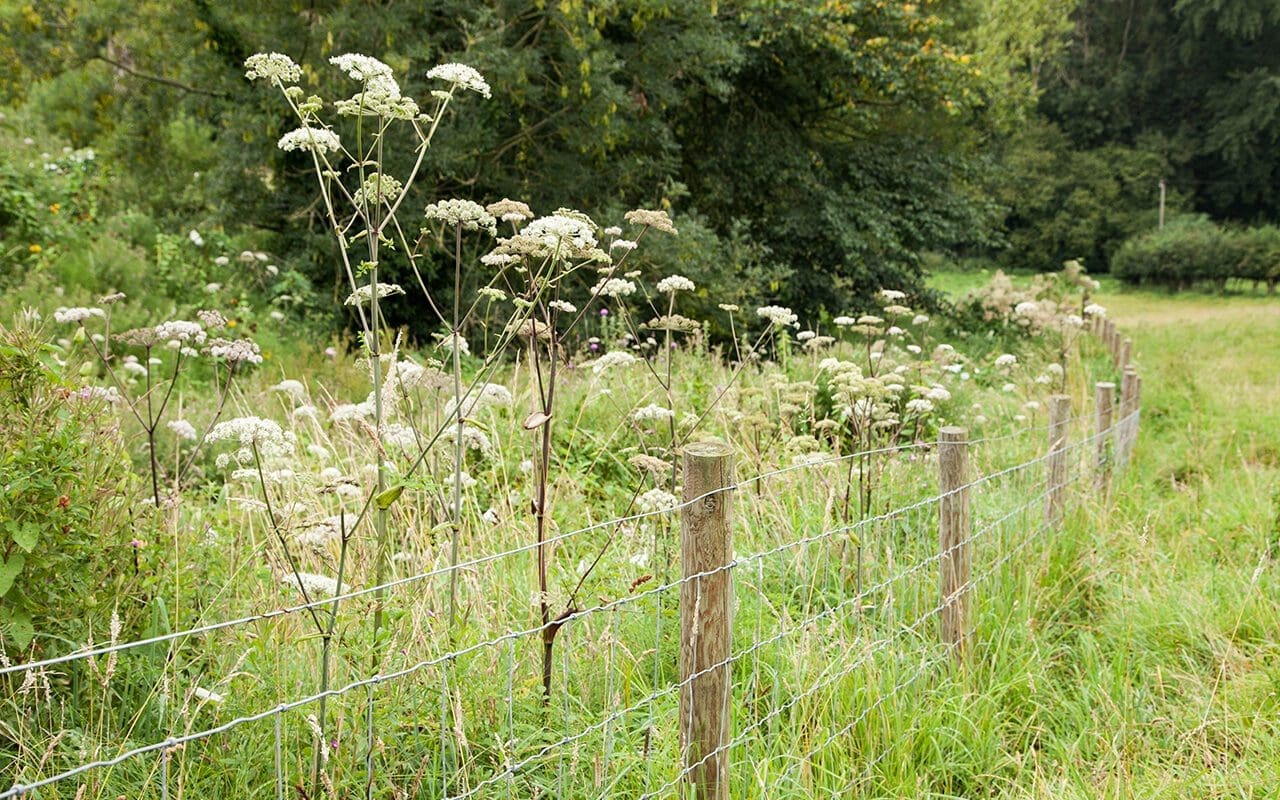
Angelica sylvestris mark the damp hollow and stand tall to either side of the ditch. The ground here is always damp, fed by springs which keep the water running even in the driest of summers. The mud close to the water’s edge is boot-grabbing and deep and the angelica are as happy there as they are in the firmer ground above it. But their preference is mapped clearly, the stems towering head height where they get the moisture they need and diminishing and then vanishing entirely where the wetland gives way to the drier pasture.
August is their season and when they are at their finely-spun best. A bolt of slender stem, leaves evenly spaced and then left behind as a tightly held fist of flower bolts up and then out to strike a series of horizontals. Creamy rays tinged with pink and receptive to all pollinating insects, they stand head and shoulders above the grasses that are now tawny around them.
Though this is their time, they have been present since late winter when we raked away the thatch and the tall woody skeletons of the ones that came before. They take two years to flower from seed. The seedlings bright and already forging a way before mud gives way to growth. Growth that will put them in the roughest of company. Marsh thistle and horsetail and tussocky grasses that it is hard to believe will tolerate company.
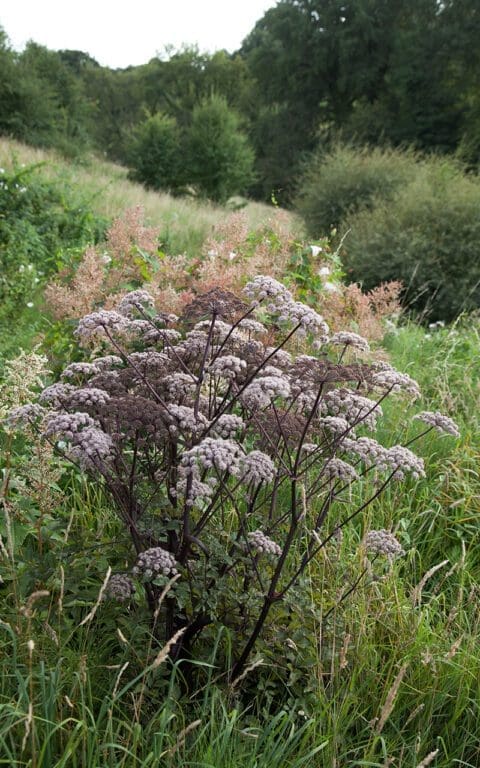
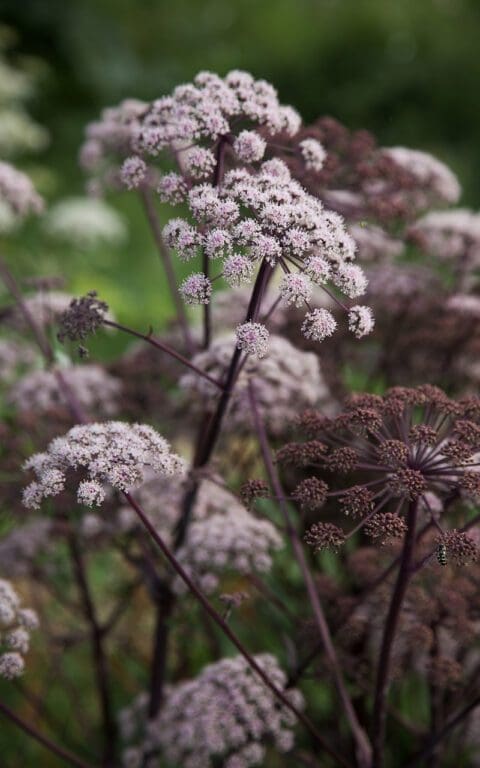
The seedlings disappear beneath the wetland growth and are happy to be eclipsed in shadow, but last year’s seedlings have sent down a strong tap root and from this they rear strong and early growth. Distinctly angelica, slender and reaching, some of the youngsters already show a variance in colour. The darkest are a rich plum purple and carry this through into their adult incarnation with flowers that are also stained dark throughout. ‘Vicar’s Mead’ or ‘Ebony’ are garden selections that maintain good colour and, though I would be happy to have them in the garden, I am more delighted to have their natural spontaneity in these wild places.
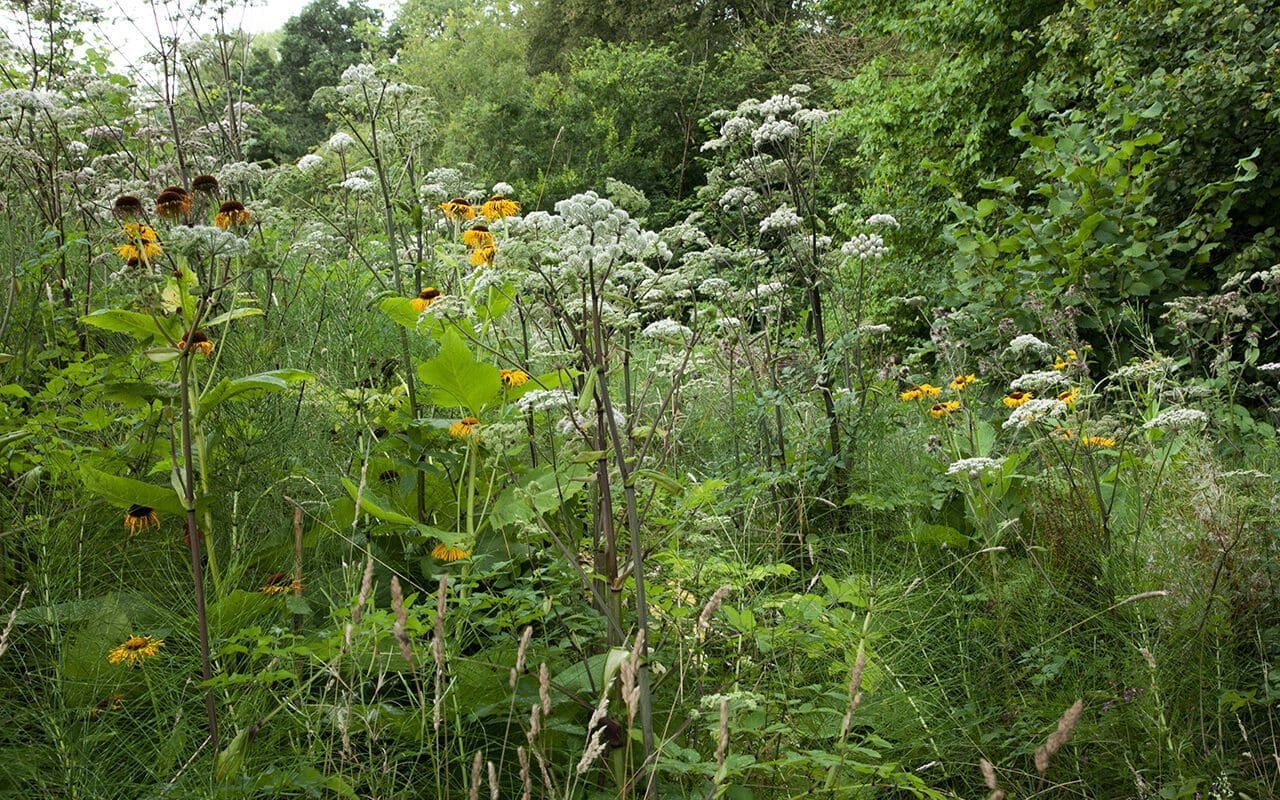
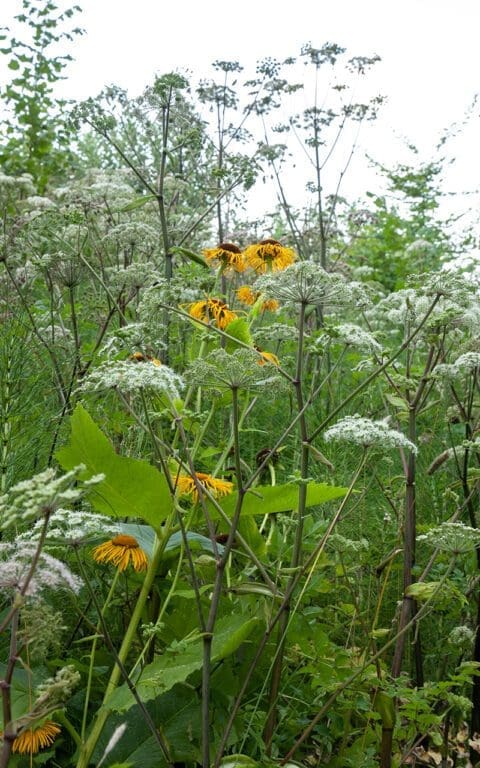
In the garden and to make the leap between the wildness of the ditch I have used the perennial Angelica anomala, which is easier to manage than the biennial Angelica sylvestris for knowing where it will appear every year. Too many self-seeders in the garden make for hours of editing in the spring, but the spontaneity of the wild angelica is delightful in the ditch for finding its own place, which from year to year is never the same.
In the lower parts of the water course and close to the fourth and final crossing that weaves a way back and forth in its descent, the angelicas appear amongst the Telekia speciosa. This robust perennial is strong enough to stand its own once established and it teams very handsomely with the angelica. Both revelling in the heavy wet ground, they take the feeling of the garden deep out into the landscape and, at this time of year, it is the angelicas that you follow to find yourself there.

Words: Dan Pearson | Photographs: Huw Morgan
Published 15 August 2020
 Previous
Previous
 Next
Next
